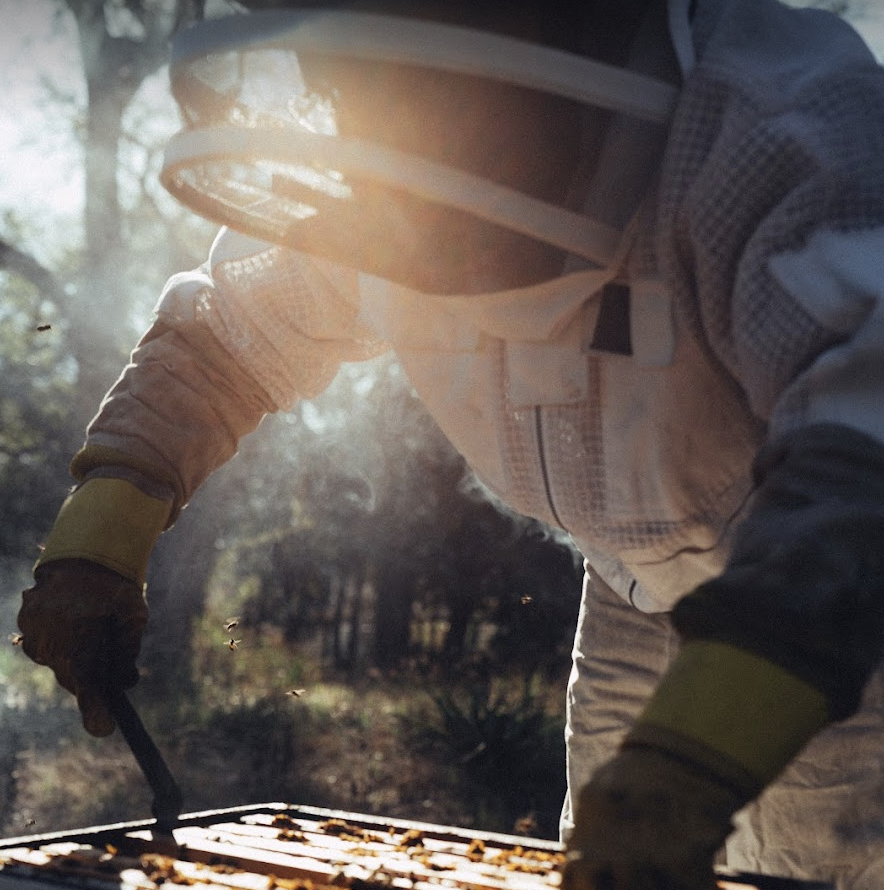First Post-Winter Hive Checks

It’s February in Texas, and that means our very short winter break in Texas is coming to an end. In a few week’s time we will begin inspecting colonies once again on a regular rotation. Our first post-winter hive checks will include all the ‘regular’ assessments we include in any inspection, and also include a few extra steps that are reserved just for these first hive checks of the year.
Today I’ll share with you what steps we take in these first post-winter checks to help guide you in your own apiaries!
- Verify status of the queen: By the first few weeks of several weeks of 60+ degrees F or above, queens should be laying. We check each colony and look for eggs to confirm we have had a queen laying in the last 3 days. Keep in mind that brood nests may still be small, so you may have to dig and look at most frames in the brood nest to find them. Not seeing any eggs? Share a frame of eggs from another colony for now and check back in a week–if you’re queenless you should see queen cells started.
- Assess food stores: Believe it or not, the risk of starvation is highest once spring gets underway–not earlier. (Assuming you left a good honey supply going into winter!) It’s not until the colony kicks into brood rearing mode and the population increases exponentially that we start to see heavy consumption of honey stores. Watch your honey stores carefully–we are still a few months away from our strongest nectar flows, and there’s no reason for a colony to starve in March when we can supplement with sugar water if necessary. Hopefully your colony is still heavy with honey, but check this data point each time you inspect over the next few months to be sure. In all future checks until the flow starts, examine your larvae carefully: if they are not swimming in royal jelly and look dry, you have a problem. Plus, European Foul Brood is a really common disease in the early spring and it’s often onset by poor nutrition, so keep an eye out for that. Feeding sugar water usually helps and it often clears up altogether by the time the nectar flow starts. A note about pollen: I find that in Texas, pollen is generally NOT a limiting factor. (We often see bees bringing in pollen in mid-December!) Of course if you see no pollen/bee bread stores in your colony at this point by the time brood is being reared you should supplement until natural pollen is available.)
- Rearrange the brood nest: It’s not unusual to find brood nests in an upper box (if you’re using Langs) or pushed up against a side wall. Center brood nests in your lowest box and place a frame of food stores on either side. This configuration can also help with insulation for what are likely still cool evenings.
- Clean your bottom boards: Cleaning duties get neglected during the winter months. This is a great time to assist your colony get ahead on their chores! Use your hive tool to scrape any debris, wax, and debris from the bottom boards.
- Assess populations, and share brood to weaker hives, if possible: This is the time of year when we really start to see strong colonies break away from weak colonies in size quickly. If you’ve got a weaker colony, share a frame of capped brood from a stronger colony. But be mindful of stealing from Peter to pay Paul…if colonies across the board are really low on brood, you may want to wait a few weeks before you begin sharing resources.
- Get your swarm plan together: At this point it’s likely too early for colonies to begin swarming. (The very earliest swarms you see are likely absconds.) But congestion in a colony, which is the cause of a colony to swarm, happens quickly. Begin thinking about which colonies should be put on a ‘swarm watch’ and begin hanging and baiting swarm traps.
- Clean out dead outs: If you lost any colonies this winter, clean them up and get them out of the apiary! If the colony has yet to be robbed out, share food resources with other hives. Abandoned hives attract wax moths and small hive beetles! Protect your brood comb for use in splits and to give colonies more space in the brood nest later by freezing it, and double bagging or placing in an airtight container after defrosting.
Everyone manages their bees a little differently. These are the steps my beeks at Two Hives take in our first post-winter hive checks. Do things differently? Comment below and tell me about it!



Leave a Reply